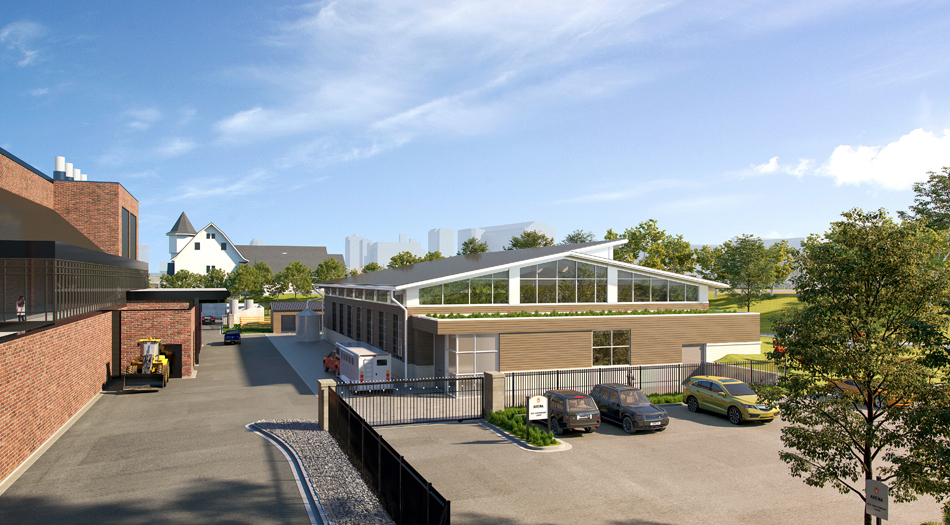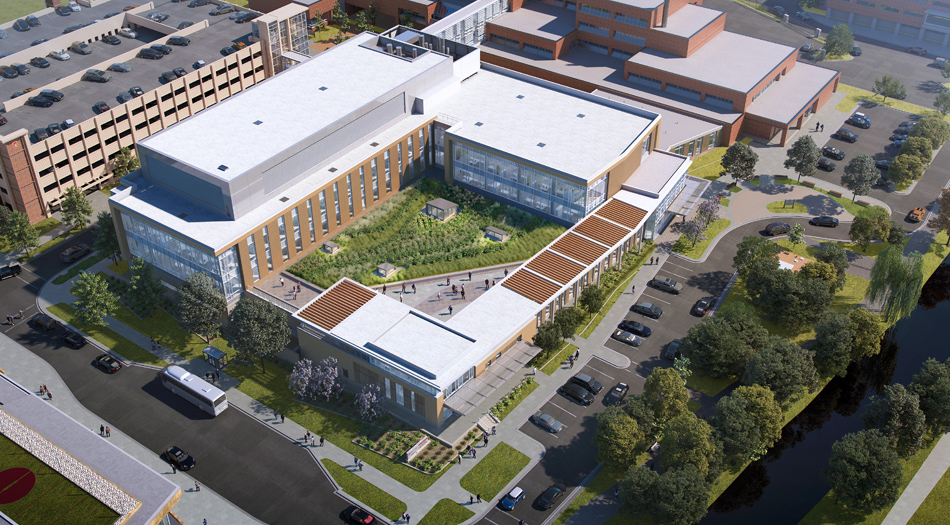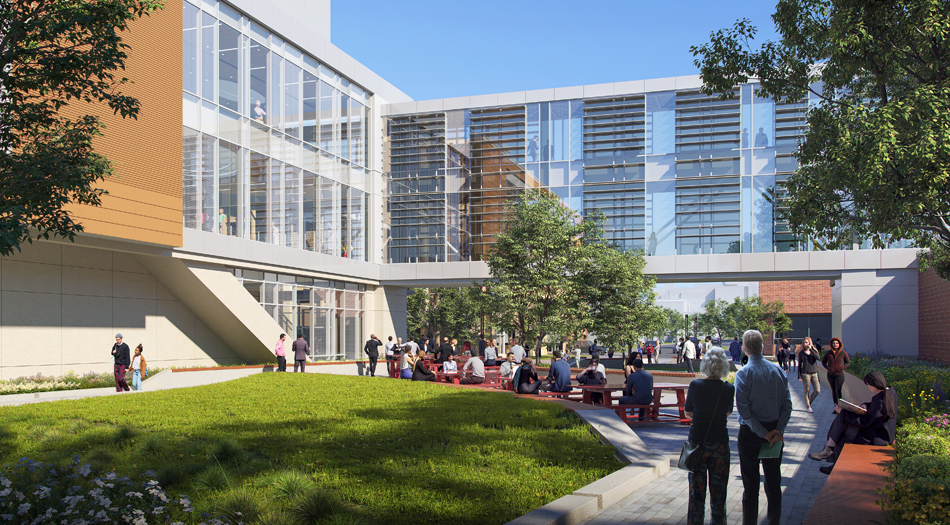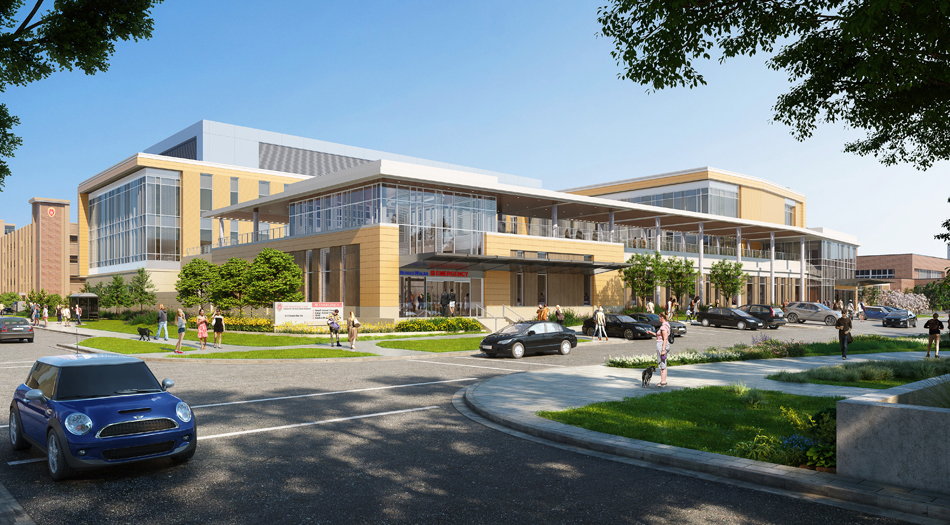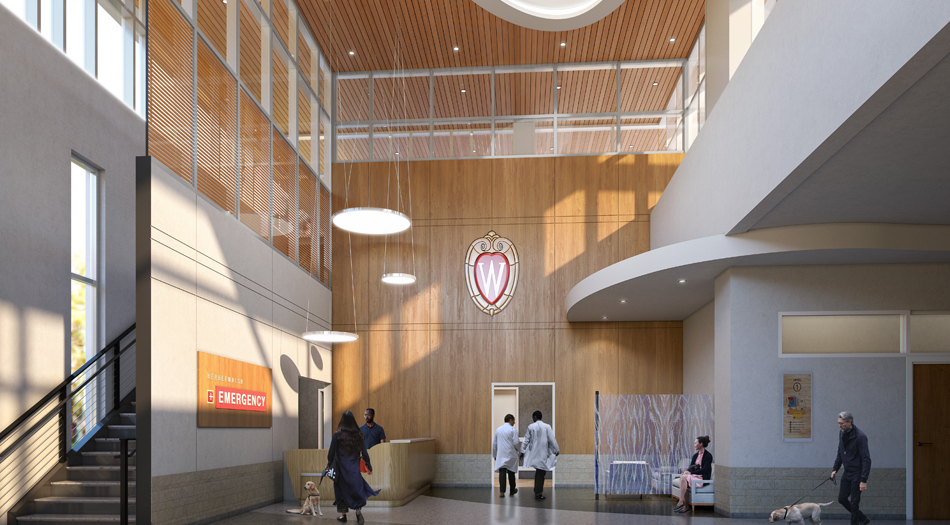
As Congress continues to negotiate the most ambitious infrastructure package in the United States in a century, one state is already leading the way.
“In 2019, our governor said, ‘Look, we have a threat to our communities and to the livelihood of Wisconsinites, and we need to do something about it,’” says Maria Redmond, director of the Wisconsin Office of Sustainability and Clean Energy. “So we started working to create guidelines to reduce emissions and ensure all our electricity consumed is carbon-free by 2050.”
At first glance, the American heartland may be a surprising place to find leading-edge examples of sustainable design. But for Wisconsin, the fight against climate change hits home. One of the largest producers of agricultural products in the United States, Wisconsin has increasingly suffered from the effects of rising temperatures and inland flooding. According to research by the University of Wisconsin–Madison, increased precipitation and elevated heat diminishes soil productivity and promotes pest infestation and disease in crops, lowering farm yields and driving up costs. “The bottom line is that the climate has changed and agriculture has already been impacted in an adverse way,” asserts Wisconsin’s Changing Climate report. This poses “a real threat to the stability of agroecosystems in the long term, jeopardizing food and economic security.”
Creating a plan to improve infrastructure and equity
In 2019, Tony Evers, the governor of Wisconsin, created the Governor’s Task Force on Climate Change, to improve infrastructure and reduce the state’s carbon footprint. The task force is aligned with a set of principles used by architects, the AIA Framework for Design Excellence, featuring 10 complementary principles—including economy, energy, and equitable communities—for identifying opportunities to improve sustainability. For years, Tate Walker, AIA, the director of sustainability at OPN Architects in Madison, used the framework to help Midwestern cities improve infrastructure. So when he was asked by state officials to help create a system for enhancing climate resilience in state buildings, he brought up the framework. Without using design jargon, it offers a decision tree that assists government leaders in evaluating sectors and prioritizing solutions that respond to community needs. The framework then provides best practices for accomplishing these goals, helping to make complicated challenges more manageable.
“From mundane lighting decisions that decrease energy demand to community-engagement tactics that overcome racial injustices like redlining, the AIA framework helps officials talk to communities, gather information, and create change,” Redmond says. “I’m not an architect; I’m a policy person. But now I can speak about wellness and embedded carbon more clearly, and these guidelines will bring about true change in our state.”
How architects can share the value of sustainable design with clients
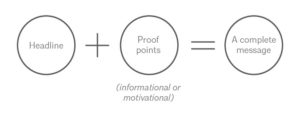
 Choose a key word that conveys your most important message: Always remember your audience, and frame the presentation of your projects so they’ll understand. Instead of using jargon or disagreeing if a client says green features will be too expensive, use plain language to explain that you are a problem solver with sustainable solutions that can often save money in the long run. Above all, choose a single word to build your most important message on, choosing from terms like accessible, cost-effective, and equitable.
Choose a key word that conveys your most important message: Always remember your audience, and frame the presentation of your projects so they’ll understand. Instead of using jargon or disagreeing if a client says green features will be too expensive, use plain language to explain that you are a problem solver with sustainable solutions that can often save money in the long run. Above all, choose a single word to build your most important message on, choosing from terms like accessible, cost-effective, and equitable.
 Use headlines developed from your keyword: Create a simple but powerful headline that incorporates the keyword you select. Headlines should be short and catchy, and should make a specific claim. An example: Architects are committed to sustainable and resilient design.
Use headlines developed from your keyword: Create a simple but powerful headline that incorporates the keyword you select. Headlines should be short and catchy, and should make a specific claim. An example: Architects are committed to sustainable and resilient design.
 Support your headline with proof points: Do the research and back up your headline with data, stories, or examples that show the power of design in action.
Support your headline with proof points: Do the research and back up your headline with data, stories, or examples that show the power of design in action.
 Put it all together by designing your message: Create a strong presentation of core messaging and visuals to align your client with your goals. AIA's Climate Action Message Book can help you build your own effective messaging campaign around your sustainability work.
Put it all together by designing your message: Create a strong presentation of core messaging and visuals to align your client with your goals. AIA's Climate Action Message Book can help you build your own effective messaging campaign around your sustainability work.
To help the state achieve its goal of 100 percent carbon-free electricity use by 2050, Wisconsin officials tapped Wendy von Below, an architect, as the section chief and project manager for the Wisconsin Division of Facilities Development. In charge of overseeing projects and buildings in the state, from universities to detention centers, von Below and her team faced a challenge. The division needed to create a set of guidelines that would enable new building designs to reduce emissions while ensuring adaptability to the 1,800 structures and projects of all types and sizes that the state was currently overseeing. “My office helps design everything from boat launches to civil projects to university athletic facilities,” she says. “The state’s building program is varied, and the DFD Sustainability Guidelines—based on LEED—we were using were outdated and not comprehensive enough. We needed something new that worked for everything.”
Using the AIA Framework for Design Excellence as the basis for development, von Below and her team created the new DFD Sustainability Guidelines for Capital Projects. These retained the original framework’s “top 10” ideas and built in requirements for a range of project types and goals, including designing for equitable communities, creating economic benefits for citizens, and lowering a structure’s overall energy use. “We realized early on that the AIA framework was accessible and relevant to all,” she says. “The resources are all there, so it was easy to start moving forward quickly. One thing I really like is having the kickoff meeting with all stakeholders where we discuss our sustainability goals, which can differ from project to project. That way, no matter what type of project we have, the entire team will align at the beginning on what goals to apply and how to make them fit the budget.”
Putting the sustainability plan into action
Von Below and her team chose two projects to pilot the new DFD Sustainability Guidelines, both of them on the University of Wisconsin–Madison campus. One was a new gymnasium and natatorium, which would include a wellness center, an ice-skating rink, a pool, a fitness space, and basketball courts. The other was the School of Veterinary Medicine, including a new addition that would double the capacity of the school’s animal hospital, a research space for cutting-edge studies on infectious diseases such as the Zika virus, and a green roof. “The focus was on compassionate design,” von Below says. “The team created a mission statement around that idea, and everything followed from there.”
When devising the vet school, von Below first focused on integration. The initial tenet of the AIA framework, integration is a step that brings all stakeholders together to discuss the goals of the building beyond aesthetics. Working with a team from Flad Architects in Madison, von Below brought together veterinary doctors, school officials, and community members to discuss the top 10 key features of the project—including water. The existing vet school was situated along Willow Creek, a green space and ecosystem. So the architects used the DFD Sustainability Guidelines to align parties on various green features, along with a new vision for the gateway to the campus. By repositioning a road adjacent to the vet school, they were able to improve traffic on a nearby thoroughfare while enhancing existing green space for the surrounding community, creating trust and goodwill for everyone involved.
“There were a host of stakeholders on the project with different priorities, so the new guidelines enabled us to bring everyone together in a productive manner,” says Mark Corey, AIA, a principal at Flad. “Everyone posted their top priorities on a wall, and we all discussed them. That allowed us to come away with a shared resolution. It gave us the bedrock for moving forward.” Marc Walker, AIA, also a principal at Flad, agrees. “Early ownership by all stakeholders became the north star that helped us take the project to a place it wouldn’t have otherwise gone.”
How elected officials can use the AIA framework to quickly enhance their communities
With simple language and an easy-to-understand approach, the framework is helping leaders create real change
 Identify an AIA architect: AIA has more than 94,000 members. These architects and designers live and work in your area. Let us help you and your department directors formulate a coherent, consistent design vision for your city. Our members are trained to find practical, affordable solutions.
Identify an AIA architect: AIA has more than 94,000 members. These architects and designers live and work in your area. Let us help you and your department directors formulate a coherent, consistent design vision for your city. Our members are trained to find practical, affordable solutions.
 Create a simple yet flexible approach: With plain language and clear steps to achieve a wide range of goals—from community needs to public design—the AIA framework helps you create community-focused solutions that are achievable and also flexible as needs change
Create a simple yet flexible approach: With plain language and clear steps to achieve a wide range of goals—from community needs to public design—the AIA framework helps you create community-focused solutions that are achievable and also flexible as needs change
 Use language that brings everybody in: If terms like climate change polarize your community, focus on how sustainable design can improve community health and earn tax breaks.
Use language that brings everybody in: If terms like climate change polarize your community, focus on how sustainable design can improve community health and earn tax breaks.
Designing a more resilient vet school
After aligning with community members and including them in the decision-making process to build trust and goodwill on a shared vision, the architects used the DFD Sustainability Guidelines to work out the best—and most economical—way to incorporate various high-performance features. First they used early energy modeling to orient the addition to take advantage of natural sunlight and reduce power consumption. Next they installed bird-safe glass, which uses a compliant ceramic frit coating to make windows a more visible obstacle. Finally, they installed more efficient water taps and filters, reducing drainage and nitrogen flow to area lakes. They also incorporated a green roof with native vegetation irrigated from cisterns, accomplishing two goals: limiting runoff and serving as a peaceful retreat for visitors to the pet hospital. “We live in an area surrounded by natural water resources,” Walker says. “The idea of reusing water and improving quality fit right in with our objectives. We have a huge roof, so let’s use it in a better way.”
- The University of Wisconsin School of Veterinary Medicine addition will include a green roof to help reduce storm water runoff.
- Daylight monitors will drive light into the animal hospital. The vegetated roof will slow water runoff and improve its quality, reduce heat island effect, and provide bird and pollinator habitats.
- Bird-friendly glazing will reduce strike potential for local wildlife, while the courtyard will retain and filter storm water from the roof.
- Multi-use paths connect the addition to the city trail networks—opening the campus further to the community.
- Access to the roof provides a comfortable space for visitors and staff to emotionally recharge during long visits or work shifts.
After ground was broken on the veterinary school in June, the framework gained momentum, and it’s starting to influence how other projects in the private sector are designed. “The great thing about the AIA framework is that it speaks to clients’ value systems,” says Kimberly Reddin, AIA, the director of sustainability at Flad. “We may have clients who haven’t laid out specific sustainability goals. But if I ask whether they care about the health and wellness of their employees, responses are a resounding yes. The AIA framework enables us to take their priorities and set clear design goals. We’ll continue using it as our sustainable-design standard.”
Going forward, von Below and her team are excited about how the AIA framework will shape greener design for Wisconsin—and inspire other states as well. “When we design projects, we’re trying to do the right thing,” she says. “The framework really helps integrate sustainability in your design so that it becomes a part of the core mission of each project—it truly motivates people.”
